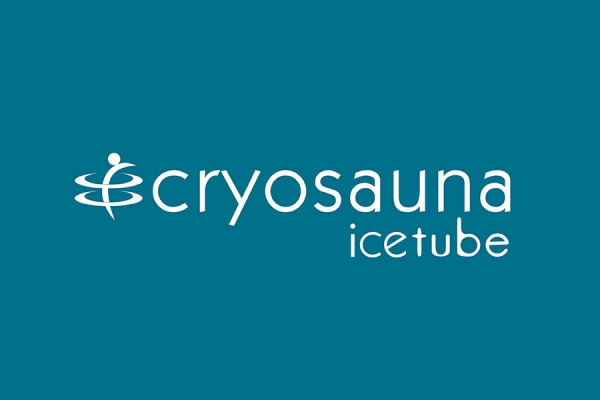Inflammation can occur in different parts of our body and is due to various causes that we will explain below. How, however, can we combat and suppress an inflammation effectively without the use of anti-inflammatory drugs and other similar formulations. Of course using whole-body cryotherapy and local if the inflammation is obvious.
-Whole-Body Cryotherapy and Inflammation
During whole-body cryotherapy, the brain, aware of the abrupt temperature drop in the cryosauna cabin as an abnormal condition, forces our body to follow the following procedures. The blood is transported from the limbs – hands and feet – to our main body. This is done so that there is no change in the temperature of our body and we suffer hypothermia.Along with this, it commands the pituitary to begin to produce dopamine, enzymes, adrenaline and endorphins. Endorphins are the natural anti-inflammatory of our organism. From the moment we get out of the cryosauna’s cabin, the blood has to be turned back, resulting in intense hyperemia throughout our body. This results in blood being transported to body parts that do not gather blood under normal conditions such as joints, spine, hips, muscles, etc. The blood that floods these points is rich in endorphins, thus fighting and inhibiting any inflammation in our body.
-Local Cryotherapy and Inflammation
Local Cryotherapy is essentially the application of low temperatures at -150 ° C at a specific point in the body where inflammation is diagnosed. This type of treatment is used to awaken and make use of the physiological reaction of the body at low temperatures.
-What is an inflammation?
Inflammation is the set of local and systemic mechanisms that activates the organism reactively after the effect on it of various damaging agents, microbes, viruses, chemicals, injuries, etc.
Inflammations are characterized by acute (few days) and chronic (longer). The mechanism of inflammation involves, on the one hand, many cells, such as e.g. macrophages and leukocytes that reach the site of inflammation through blood circulation, and on the other hand many substances that have specific biological effects and are produced by the cells of the inflammation. These substances, such as cytokines, chemokines, adhesion molecules, etc., by acting on other cells they attract the inflammation site and / or activate them to produce other substances, ultimately neutralizing and eliminating the damaging agent. Consequences of this inflammatory process are certain clinical phenomena that are characteristic of the inflammation.
These are: pain, swelling (swelling), redness and heat at the site of the inflammation.
Inflammation has been recognized as the substrate of almost every chronic disease. In addition to asthma, rheumatoid arthritis, Crohn’s disease includes diabetes, depression, schizophrenia, Alzheimer’s disease and heart disease. In recent years, we have evidence that chronic inflammation can be implicated in the transition from the pre-cancerous stage to the stage of complete disease.
-Foods and inflammation
New research links our lifestyle and diet with inflammation and predisposition to disease. Obesity, heart disease, cancer, osteoporosis and depression are linked to what we eat. Inflammatory foods include processed foods that provide a lot of calories and have lost most of their nutritional value. Typical examples of such foods are:
- sugar
- white flour
- processed salt
Processed foods, unlike unprocessed foods, have low nutrients such as vitamins, minerals and enzymes (chemicals needed to make chemical reactions in our bodies). These foods when entering our body cause large and steep fluctuations in the levels of sugar in our blood. Sugar initially rises sharply, then falls sharply, rises again and so on. This causes increased secretions of hormones that fuel inflammation, and especially insulin. Our body in the effort to keep blood sugar in the desired levels increases insulin secretion. Increased levels of insulin in our blood have been associated with elevated levels of inflammation markers.
Depending on the foods we eat, even if our blood sugar levels are at normal levels when we haven’t eaten , we may have elevated insulin levels and a predisposition to inflammation. The glycemic index of foods is a categorization of foods according to the speed of the sugar in our blood. Consuming foods with a low glycemic index is beneficial to our health and has anti-inflammatory action.
Such foods are :
- the apples,
- green vegetables,
- olive oil,
- organic eggs,
- the kernel nuts
Unprocessed foods are rich in nutrients and have a low glycemic index.
These foods, but also:
- raw nuts,
- fish,
- the seeds
- berries as well as fermented organic foods contain natural vitamins, minerals, proteins, good fats, and enzymes that provide our body with the basic raw materials and ensure good health.
In cases of inflammatory diseases, dietary supplementation with vitamin C and natural antioxidants such as resveratrol, alpha lipoic acid, quercetin and green tea phenols can, according to studies, help significantly in reducing inflammation.
Hidden inflammation is not understood because it does not cause pain. As a result, the patient does nothing to stop the spread of hidden inflammation. Hidden inflammation acts treacherously for years, if not decades, without being perceived, unless it has damaged the organs.
There is no drug that reverses the high levels of “hidden” inflammation. But the anti-inflammatory diet of the food zone does. It has been clinically proven that within 30 days there is a significant reduction in “hidden” inflammation. By checking this, you are on the right path to maintain well-being throughout your life.






